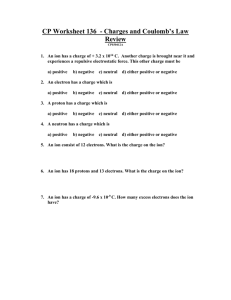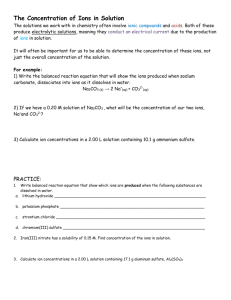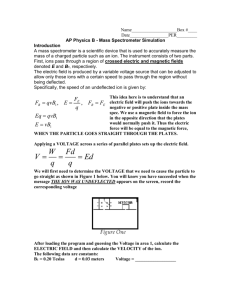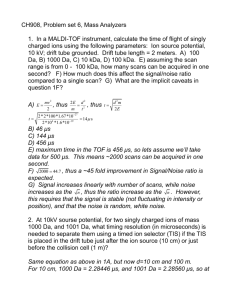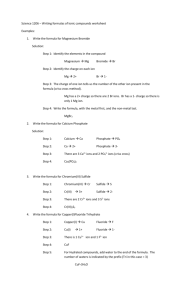diy kit 57. ion generator
advertisement
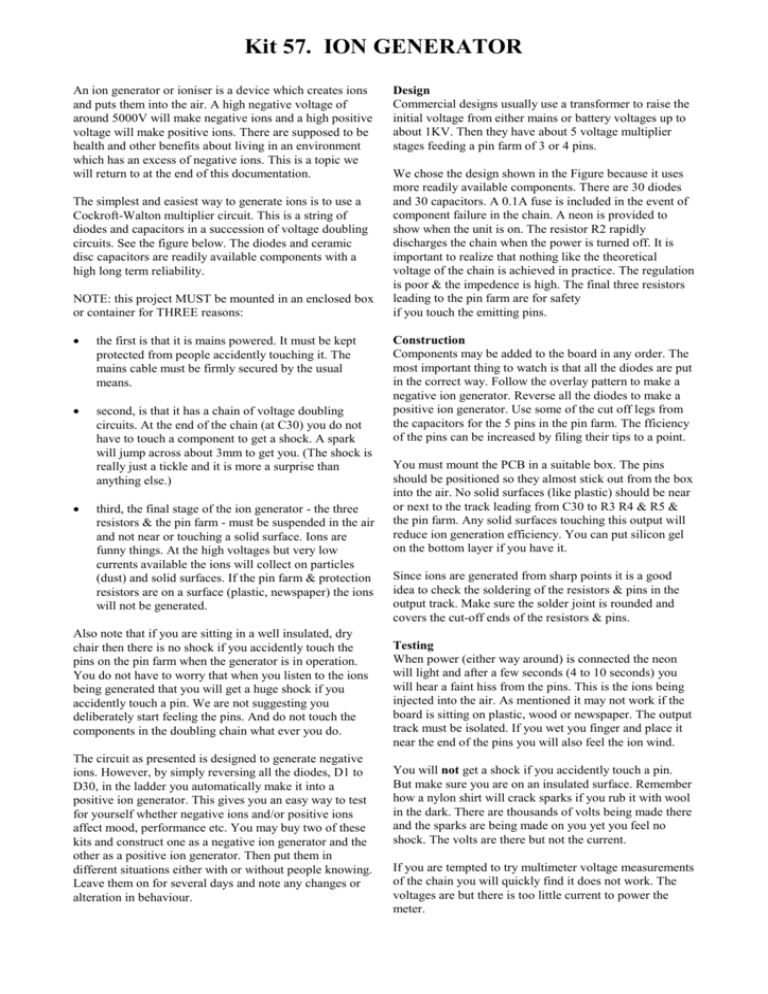
Kit 57. ION GENERATOR An ion generator or ioniser is a device which creates ions and puts them into the air. A high negative voltage of around 5000V will make negative ions and a high positive voltage will make positive ions. There are supposed to be health and other benefits about living in an environment which has an excess of negative ions. This is a topic we will return to at the end of this documentation. The simplest and easiest way to generate ions is to use a Cockroft-Walton multiplier circuit. This is a string of diodes and capacitors in a succession of voltage doubling circuits. See the figure below. The diodes and ceramic disc capacitors are readily available components with a high long term reliability. NOTE: this project MUST be mounted in an enclosed box or container for THREE reasons: the first is that it is mains powered. It must be kept protected from people accidently touching it. The mains cable must be firmly secured by the usual means. second, is that it has a chain of voltage doubling circuits. At the end of the chain (at C30) you do not have to touch a component to get a shock. A spark will jump across about 3mm to get you. (The shock is really just a tickle and it is more a surprise than anything else.) third, the final stage of the ion generator - the three resistors & the pin farm - must be suspended in the air and not near or touching a solid surface. Ions are funny things. At the high voltages but very low currents available the ions will collect on particles (dust) and solid surfaces. If the pin farm & protection resistors are on a surface (plastic, newspaper) the ions will not be generated. Also note that if you are sitting in a well insulated, dry chair then there is no shock if you accidently touch the pins on the pin farm when the generator is in operation. You do not have to worry that when you listen to the ions being generated that you will get a huge shock if you accidently touch a pin. We are not suggesting you deliberately start feeling the pins. And do not touch the components in the doubling chain what ever you do. The circuit as presented is designed to generate negative ions. However, by simply reversing all the diodes, D1 to D30, in the ladder you automatically make it into a positive ion generator. This gives you an easy way to test for yourself whether negative ions and/or positive ions affect mood, performance etc. You may buy two of these kits and construct one as a negative ion generator and the other as a positive ion generator. Then put them in different situations either with or without people knowing. Leave them on for several days and note any changes or alteration in behaviour. Design Commercial designs usually use a transformer to raise the initial voltage from either mains or battery voltages up to about 1KV. Then they have about 5 voltage multiplier stages feeding a pin farm of 3 or 4 pins. We chose the design shown in the Figure because it uses more readily available components. There are 30 diodes and 30 capacitors. A 0.1A fuse is included in the event of component failure in the chain. A neon is provided to show when the unit is on. The resistor R2 rapidly discharges the chain when the power is turned off. It is important to realize that nothing like the theoretical voltage of the chain is achieved in practice. The regulation is poor & the impedence is high. The final three resistors leading to the pin farm are for safety if you touch the emitting pins. Construction Components may be added to the board in any order. The most important thing to watch is that all the diodes are put in the correct way. Follow the overlay pattern to make a negative ion generator. Reverse all the diodes to make a positive ion generator. Use some of the cut off legs from the capacitors for the 5 pins in the pin farm. The fficiency of the pins can be increased by filing their tips to a point. You must mount the PCB in a suitable box. The pins should be positioned so they almost stick out from the box into the air. No solid surfaces (like plastic) should be near or next to the track leading from C30 to R3 R4 & R5 & the pin farm. Any solid surfaces touching this output will reduce ion generation efficiency. You can put silicon gel on the bottom layer if you have it. Since ions are generated from sharp points it is a good idea to check the soldering of the resistors & pins in the output track. Make sure the solder joint is rounded and covers the cut-off ends of the resistors & pins. Testing When power (either way around) is connected the neon will light and after a few seconds (4 to 10 seconds) you will hear a faint hiss from the pins. This is the ions being injected into the air. As mentioned it may not work if the board is sitting on plastic, wood or newspaper. The output track must be isolated. If you wet you finger and place it near the end of the pins you will also feel the ion wind. You will not get a shock if you accidently touch a pin. But make sure you are on an insulated surface. Remember how a nylon shirt will crack sparks if you rub it with wool in the dark. There are thousands of volts being made there and the sparks are being made on you yet you feel no shock. The volts are there but not the current. If you are tempted to try multimeter voltage measurements of the chain you will quickly find it does not work. The voltages are but there is too little current to power the meter. Kit 57. ION GENERATOR If It Does Not Work. Check that the diodes are all in the correct way. Are the resistors in the right places. Did you put the fuse in. Use a multimeter to check each diode & a capacitance meter to check each capacitor. Ozone. After a few hours operting in a small room you may find that there is a funny smell present. You may recognise it as a 'machinery' smell. This is ozone gas. It is produced in high voltage switching machinery such as generators. It is also given off by rotting seaweed. (Indeed in the last century people in England used to flock to the seaside to smell the ozone. It was thought to be good for you.) If the ion generator produces too much ozone then we suggest you jumper the pin farm track from C30 to C28 or C26. That is you cut out the last one or two voltage doubling stages. Are Negative Ions of Benefit to You? Quite a bit of research has gone into this topic. Research ranges from the quack pseudo-scientific to the reputable. A list of some papers from the latter group is given here. In summary, there is no evidence that negative ions have any effect on well being however it is defined. The claims by commercial producers of negative ion generators that their products enhance efficiency, increase productivity and contribute to personal health are unsupported by scientific evidence. However, if you think something is going to do you good then it may in fact do so; this is the placebo effect. And alot of research in the 1990's has gone into it. But that is another story. Baron, Robert A. (1987). Effects of Negative Ions on Interpersonal Attraction: Evidence for Intensification. Journal of Personality & Social Psychology,52 (3), 547553. Baron, Robert A. (1987). Effect of Negative Ions on Cognitive Performance. Journal of Applied Psychology, 72, 131-137. Dolezalek, Hans. (1986). Atmospheric Electricity, Ions, and Pseudoscience. The Skeptical Enquirer, 11, 56-60. See follow-up article by James Rotton in the same journal (1987) 11, 305-306. Web Plug in ‘ion generator’ in yahoo.com and you will come up with commercial and semi-scirntific References to them. They make interesting reading. COMPONENTS 0.01uF 1KV ceramic capacitor 1N4007 diode 2 pole terminal block Fuse 0.1A Fuse holder & cap Neon Resistors 5%, 1/4W: 3M3 orange orange green 100K brown black yellow K57 PCB 30 30 1 1 1 1 4 1 1 Kit 57. ION GENERATOR


